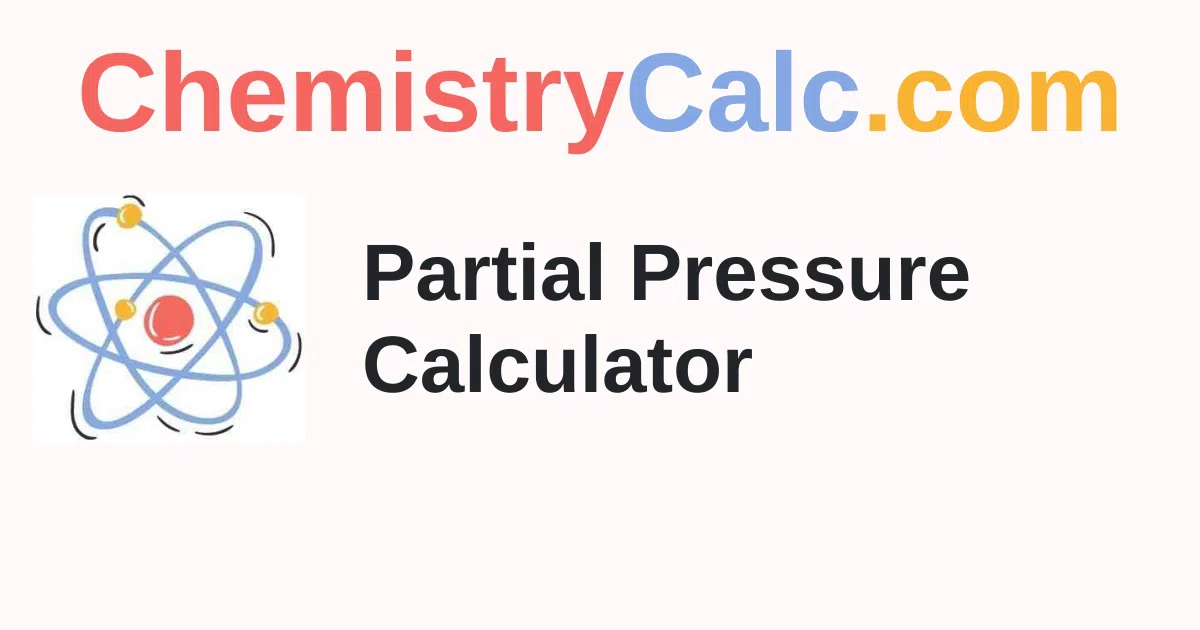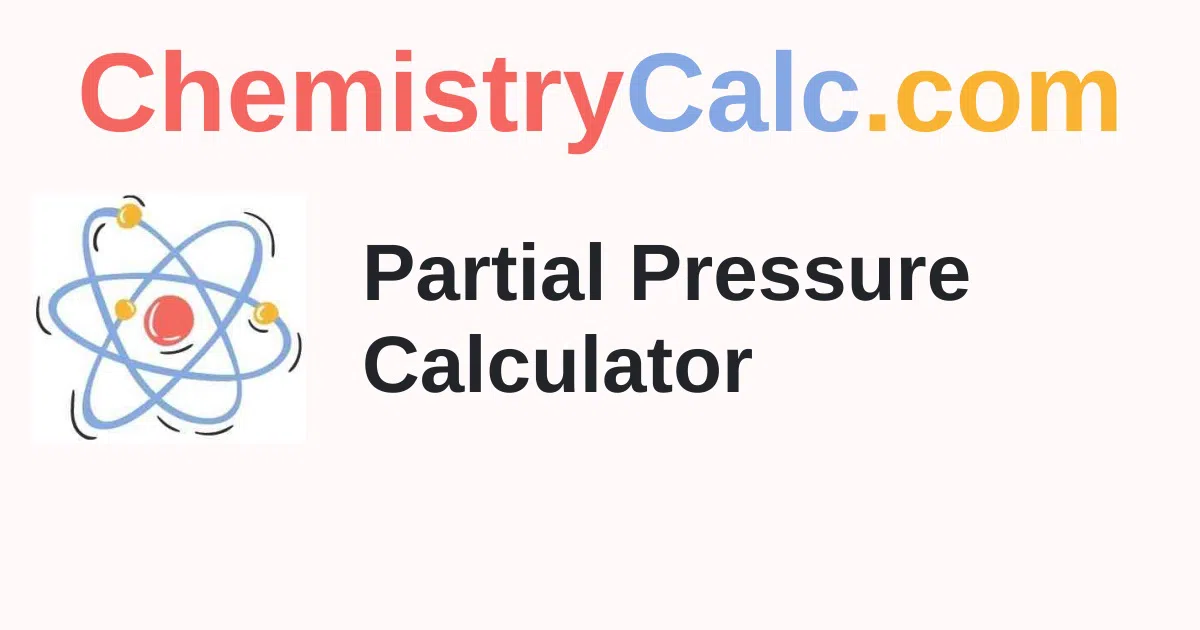Partial Pressure Calculator
Partial Pressure Calculator is a user-friendly tool that is useful to compute and understand gases partial pressure. It makes use of Henry Law, Ideal gas law and Dalton's law to get the partial pressures. All you need to do is provide the required details and hit the calculate button to check the result quickly.
Dalton's Law
Ideal Gas Law
Henry Law Method 2
Henry Law Method 1
Steps to Find Partial Pressure
The following are the simple steps on calculating partial pressure of gases easily. Have a look at them and followcarefully.
Dalton's Law:
- Get the total pressure and mole fraction from the question.
- Multiply the total pressure with the mole fraction to check the partial pressure.
Ideal Gas Law:
- Know the number of moles, temperature and volume.
- Multiply the number of moles, temperature and universal gas constant together.
- Divide the product by the volume of the gas to find the partial pressure of ideal gases.
Henry Law:
- Find the gas name and mole fraction or concentration.
- Multiply the Henry law constant with the concentration.
- Or, multiply constant with the mole fraction.
Dalton's Law of Partial Pressures
According to Dalton's law of partial pressure, the total pressure exerted on a container wall by a gas mixture is equal to the sum of the partial pressures of each separate gas.
The equation is total pressure = p1 + p2 + . . pn
Here, p1, p2, . . pn are the partial pressure of each gas component.
partial pressure = total pressure x mole fraction
Where,
mole fraction is the ratio of moles of the particular gas to the moles of the total gas mixture.
Calculating Partial Pressure Using Ideal Gas Law
The ideal gas law states that, p * V = n * R * T
The partial pressure equation is p = (n * R * T)/V
Where,
p is the partial pressure of the gas
V is the volume of the gas
n is the number of moles of the gas
R is the universal gas constant, 8.3145 J/mol K
T is the temperature of the gas
Partial Pressure Formula - Henry's Law
Henry's law states that the partial pressure of a gas above the liquid is proportional to the amount of gas that is dissolved in the liquid. The coefficient of proportionality is Henry's constant.
Henry's law method 1 is used when we have concentration of the solute.
pressure = KH1 x concentration
Method 2 is used when the mole fraction of the solute is known.
pressure = KH2 x mole fraction
Where,
KH1 is Henry's law constant in (litre x atm/mol)
KH2 is Henry's law constant in atm
| Element | Henry's law constant [litre*atm/mol] | Henry's law constant [atm] |
|---|---|---|
| O<sub>2</sub> | 769.23 | 4.259*10<sup>4</sup> |
| H<sub>2</sub> | 1282.05 | 7.099*10<sup>4</sup> |
| Co<sub>2</sub> | 29.41 | 0.163*10<sup>4</sup> |
| N<sub>2</sub> | 1639.34 | 9.077*10<sup>4</sup> |
| He | 2702.7 | 14.97*10<sup>4</sup> |
| Ne | 2222.22 | 12.3*10<sup>4</sup> |
| Ar | 714.28 | 3.955*10<sup>4</sup> |
| CO | 1052.63 | 5.828*10<sup>4</sup> |
Example:
Question: A mixture of gases at 760 torr contains 55% nitrogen, 25% oxygen and 20% carbon dioxide by volume. Find the partial pressure of each gas in torr?
Answer:
Given that
Volume of nitrogen = 55%
volume of oxygen = 25%
volume of carbon dioxide = 20%
Partial pressure = mole fraction x total pressure
pressure of nitrogen = (55/100) x 760 = 418 torr
Pressure of carbon dioxide = (20/100) x 760 = 152 torr
Pressure of oxygen = (25/100) x 760 = 190 torr
Want to explore more chemical concepts and make all your calculations much easier and faster then check our website Chemistrycalc.Com and access which calculator you need.
FAQ’s on Partial Pressure Calculator
1. What is the partial pressure formula?
The partial pressure of a gas can be calculated using three different laws. They are ideal gas law, Henry's law and Dalton's law. The simple formulas of each of the laws to find the partial pressures are here:
- Dalton's law: partial pressure = total pressure x temperature
- Ideal gas law: pi = (ni * R * T) / v
- Henry's law: Pressure = KH1 x concentration = KH2 x mole fraction.
2. How to calculate partial pressure?
To get the partial pressures of gases, we have to know which law to be used based on the known parameters. Enter the values in the input fields and press the calculate button to find the gas partial pressure as the answer.
3. What is partial pressure?
If a container is filled with more than one gas, each gas exerts pressure. The pressure of anyone gas within the container is called partial pressure. For example, if a container has a mixture of two gases oxygen and carbon dioxide then the pressure exerted by oxygen on the walls of the container is called partial pressure.
4. What is the unit for partial pressures?
The units of partial pressures are pascals (Pa) or atmospheres or Nm-2.
5. Define Dalton's law of partial pressure?
Dalton's law of partial pressure states that the total pressure exerted by the mixture of gases is the sum of the partial pressure of each and every existing individual gas and gas is assumed to be gas. Total partial pressure = P1 + P2 + P3 + . ..

